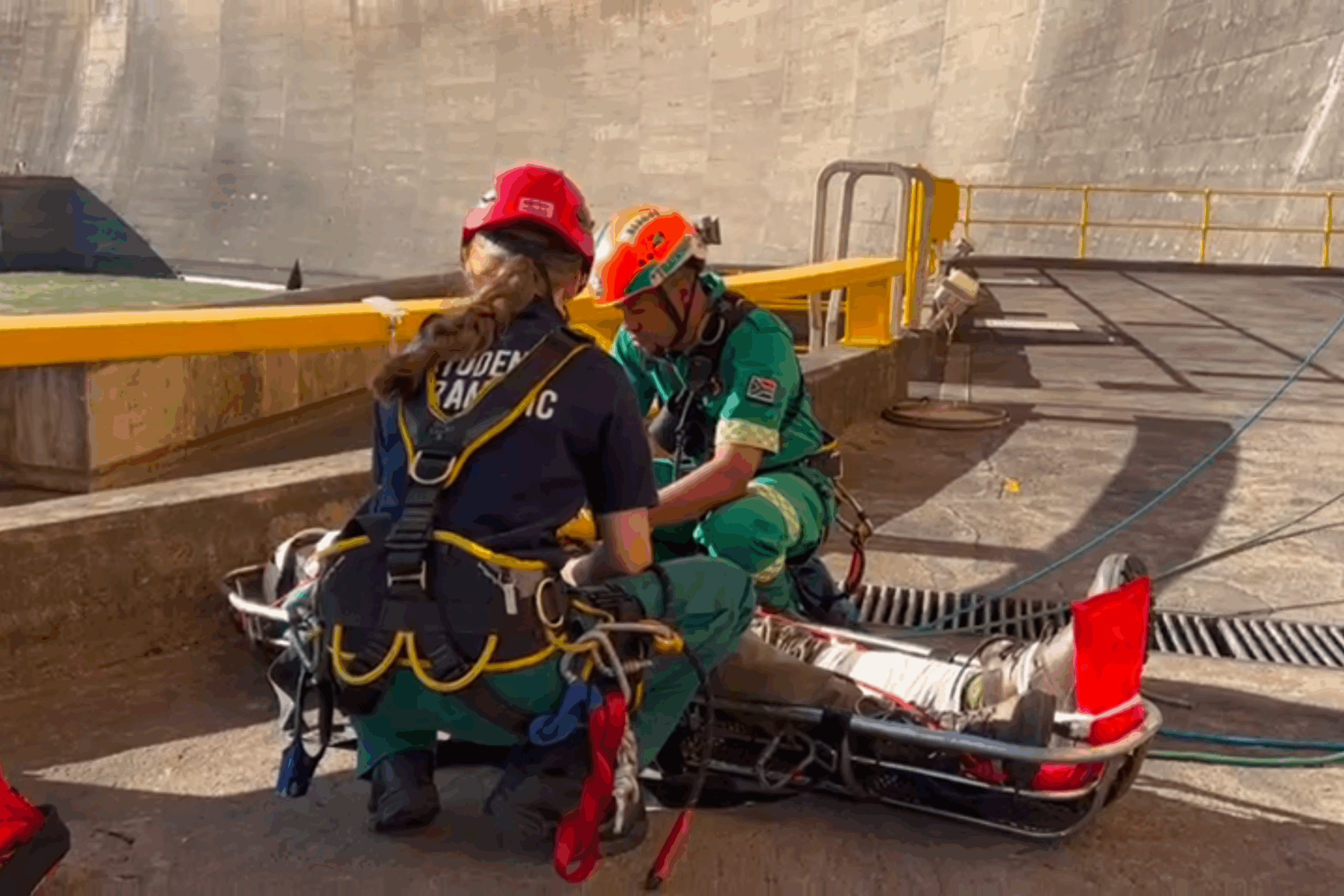In a remote and rugged region, a solitary construction worker battles the demanding physical labour and the harsh and isolating environmental conditions. Similarly, a welder works tirelessly deep within a mine, confronting the intense physical work in a hazardous environment and the daunting fact that medical facilities are hours away. These stories go beyond the typical tales of blue-collar work, highlighting the exceptional obstacles faced by individuals whose labour surpasses the customary boundaries of their professions. To address the complex issues faced by blue-collar workers, companies must take a comprehensive approach that prioritises their workforce’s mental and physical well-being. This involves recognising these workers’ unique challenges and developing tailored solutions beyond traditional methods. Employee Assistance Programs (EAPs) provide a holistic support system that offers comprehensive assistance in navigating the complexities of demanding work environments.

Understanding the Specific Needs of Blue-Collar Workers
Blue-collar workers in remote or challenging locations often struggle with a unique set of challenges that go beyond the typical demands of their professions. Take, for instance, a construction worker based in a remote mountainous region. This worker faces not only the physical demands of the job but also the isolation and harsh environmental conditions. The lack of nearby amenities and social outlets can contribute to a sense of loneliness and detachment from support networks, impacting mental well-being.
The toll of these challenges is not limited to individual well-being but extends to business operations as well. A fatigued and stressed workforce is more prone to accidents and errors, jeopardising both employee health and the efficiency of operations. In industries such as mining or agriculture, where remote locations are common, workers’ mental and physical health directly influences productivity and the overall success of the organisation.
To address these issues, companies must adopt holistic approaches prioritising their blue-collar workforce’s physical and mental health, like implementing Employee Assistance Programs (EAP).
Tailoring EAP Services for Challenging Locations
When providing Employee Assistance Program (EAP) services in remote project locations, it is crucial to customise them to meet the specific challenges of each location. These locations often have limited access to traditional healthcare facilities, higher security concerns, and unique environmental factors.
To effectively address these challenges, EAP services should be flexible and adaptable, considering the specific needs and limitations of the workforce in those areas. This customisation may involve incorporating telehealth solutions, mobile clinics, or remote counselling services to bridge the healthcare gap. Additionally, providing educational resources becomes paramount without easily accessible healthcare. These resources can empower employees by offering information on preventive health measures, mental health awareness, and coping strategies, promoting a proactive approach to well-being.
Cultural and language considerations are crucial in ensuring the relevance and effectiveness of EAP support. Acknowledging and respecting cultural diversity within the workforce and addressing any language barriers that may hinder communication is essential. EAP services can better connect with the target audience by incorporating culturally sensitive counselling approaches and providing materials in multiple languages. This inclusivity not only enhances the accessibility of support but also fosters trust and understanding between employees and the assistance program.
Ultimately, tailoring EAP services for remote locations requires a comprehensive approach that integrates healthcare alternatives, educational resources, and cultural considerations, creating a support system that effectively meets the unique needs of the workforce in these environments.
Practical EAP Solutions in Challenging Locations
In addressing the unique challenges blue-collar workers face in challenging locations, implementing practical Employee Assistance Program (EAP) solutions becomes crucial. Remote counselling services tailored to their needs offer a lifeline for individuals navigating demanding work environments. For instance, leveraging video conferencing platforms and telehealth technologies can provide access to mental health professionals, allowing workers to receive counselling and support despite geographical constraints. Additionally, organising workshops focused on stress management, resilience building, and interpersonal skills equips blue-collar workers with practical tools to navigate the complexities of their roles.
Emergency support and crisis intervention play a pivotal role in maintaining the well-being of workers in challenging locations. Establishing a responsive system with 24/7 helplines, on-site crisis response teams, and mental health first aid training ensures immediate assistance during critical situations. This proactive approach addresses primary concerns and fosters a culture of support, encouraging workers to reach out for help when needed.
Introducing Total Healthcare Management solutions, such as those offered by ATA International Holdings, and adds a holistic dimension to employee well-being. This comprehensive approach goes beyond traditional healthcare benefits by addressing not only physical health but also mental and emotional well-being. These solutions may include on-site clinics, preventive health screenings, and wellness programs, creating a supportive ecosystem for blue-collar workers. By integrating medical services with mental health support, Total Healthcare Management becomes a powerful tool in ensuring the overall health and resilience of the workforce in challenging locations.

Measuring the Impact in Remote and Challenging Locations
Measuring the effectiveness of Employee Assistance Programs (EAPs) in remote and challenging locations requires a careful and tailored approach.
Key performance indicators (KPIs) for successful EAPs in these settings may include metrics related to accessibility, such as the utilisation rate of EAP services, which indicates the level of employee engagement with mental health resources. Additionally, tracking absenteeism and presenteeism rates can provide insights into how well the program addresses mental health issues and promotes employee well-being, as improved mental health can directly affect these rates.
A combination of quantitative and qualitative methods should be used to assess improvements in mental health and overall well-being in these challenging locations. Quantitative data can be collected through surveys and self-assessment tools that measure employee stress levels, anxiety, and general mental health changes. These surveys should account for the unique challenges faced in remote locations to ensure accurate data. Qualitative methods, such as focus group discussions and one-on-one interviews, can provide deeper insights into employees’ experiences and perceptions of the EAP, helping to identify specific areas of impact and improvement.
Monitoring trends in healthcare utilisation, especially regarding mental health services, can offer additional data to assess the program’s impact. By collaborating with healthcare providers and incorporating their feedback, organisations can comprehensively understand how effective their EAP initiatives are in promoting mental health and overall well-being in remote and challenging locations. Regularly reviewing and adapting these KPIs and assessment methods will enable organisations to refine their EAP strategies and ensure they meet employees’ unique needs in these complex environments.
Conclusion
In challenging work environments, blue-collar workers face unique difficulties beyond the physical demands of their jobs. These challenges impact both the individuals’ well-being and the operations of businesses. Companies can proactively address these challenges by implementing tailored Employee Assistance Programs (EAPs). These programs should be adaptable, incorporating telehealth services, cultural sensitivity, and educational resources to bridge gaps in healthcare and improve overall well-being. Practical solutions within EAPs, such as remote counselling and crisis intervention, empower workers to navigate demanding work environments effectively. Companies like ATA International Holdings offer comprehensive healthcare management that goes beyond the typical benefits, integrating medical services with mental health support for a comprehensive approach. If you are looking for comprehensive health-related programs that prioritise the well-being of blue-collar workers in challenging environments, reach out to ATA International Holdings.


